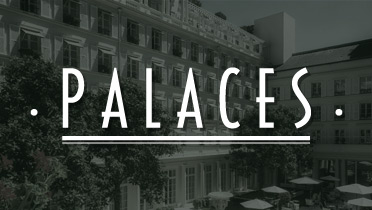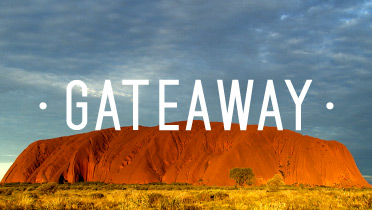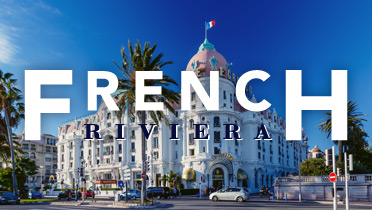Zambia, Kafue National Park
Makila Kapinga Camp
In Zambia’s Busanga Plains, in the midst of buffalo herds and Lechwe cobs, we find the tents of the Kapinga Camp, sprung from the imagination of architects Silvio Rech and Lesley Carstens. Decorated with local natural materials by Mandy Langebrink, the lodge has four tents installed on wooden platforms. In this territory abounding in wild fauna, guests have an uninterrupted view of the plains and a breathtaking spectacle. Under the canvas of the tents, there’s a veritable luxury hotel room, a sort of rustic chic with canopy beds and an outdoor shower order to remain close to nature. A restaurant and bar in the shade of immense trees possess the same parquet, the same materials and the same rustic chic. The Kapinga Camp is a veritable island in the heart of the bush enabling guests to remain in total communion with the environment.
Zambia
Zambia, situated between, the Tropic of Capricorn and the Equator, is a country in southern Africa bordering the center and the east of the continent. This land of hills, high plateaus and bush has a number of rivers like the Zambeze and the Kafue as well as many lakes and marshlands. It’s here that we find Victoria Falls, Africa’s most imposing waterfall. Livingston was the first European to admire this magnificent sight which is classified as a UNESCO world heritage. Originally inhabited by hunters and gatherers known as the Bochiman, Zambia then received Bantus, Bembas and Lozis. In the 18th century, Arab merchants came here in search of free manual labor for the sultans of Zanzibar. It was then administered for a time by Cecil Rhodes’ company and became a protectorate under the name of Northern Rhodesia. Today, it is an independent member of the British Commonwealth.
About the size of Britain and France combined, Zambia possesses one of Africa’s largest reserves, the Kafue National Park. This 22,000 square kilometer reserve has an incredibly diverse fauna, including big cats like the lion, the leopard and the cheetah, and small carnivores like the hyena, jackal, mongoose and the civet. Elephants, buffalo and lesser known species of antelope like the damaliscus and the duiker have also made this park their home.
To the north, the Busanga plains, irrigated by the Lunga, the Lufupa and the Lafue Rivers, is one of the rare totally unspoiled regions in the world. The Kafue river contains crocodiles and hippopotamuses as well 400 species of birds including the famous white headed fish eagle whose image can be found on the country’s flag.
A small refined island in the bush
In the Busanga Plain, in the midst of immense herds of buffalo and Lechwe cobs, we find the tents of the Makila Kapinga Camp, created by architects Silvio Rech and Leskey Carstens.
In the heart of this region of wild fauna, four Meru style tents blend in harmoniously with the surrounding nature. The lodge’s four tents on wooden platforms, were entirely built with local, natural materials, by interior decorator, Mandy Langebrink. This veritable island of refinement in the midst of lion, elephant and hippo territory has an uninterrupted view of the plain, offering guests a breathtaking spectacle all day long. Under the canvas, the room resembles that of a luxury, rustic chic hotel, with a wooden canopy bed, a leather pouf, parquet floors, a raw canvas closet and a red armchair to add a touch of color. In the adjacent bathroom, the sinks are in bluish gray stoneware lying on a wooden surface area supported by two crude beams. Braided baskets are used for storage. An outdoor shower enables guests to remain as close to nature as possible, which exemplifies the concept of the Kapinga Camp: a simple piece of canvas separating the visitor from the surrounding fauna, thus creating total communion with nature.
To escape the heat during the day, there is a restaurant and a bar in the shade of the immense trees with the same parquet floors, the same raw materials and the same red poufs as in the rooms. We find this red once again in the dining room seats, around the table, on the red canvas wing chairs which stand side by side with beige or gray chairs in perfect harmony with the twisted gray tree trunks whose branches protect the camp. In this spirit of communion with nature, the Kapinga Camp offers guests a hot air balloon flight over the plains. It’s a truly magical moment to see the sun rising over the immense green expanse below, with rare groups of trees scattered about and herds of buffalo, zebra and antelope passing though.
The zebra’s stripes enable it to blend into the environment, thus protecting it from numerous predators. It’s believed that this quality makes them less susceptible to sleeping sickness than other animals in the bush since the tsetse fly responsible for the disease has a hard time seeing the zebra because of its stripes.
details about this hotel
Description:
Four stars / Lodges & luxury tents / Communion with nature / Vehicle & hot-air balloon safaris
When open:
Open June 1st through November 15th
Number of rooms and suites:
4 suites
Prices:
Double occupancy from 1,180 euros
Nearest airport:
Lusaka International Airport (LUN) - Lusaka
Hotel details:
MAKILA KAPINGA CAMP
Busanga Plains
Kafue National Park
Zambia
details about this country
Flight time from Paris:
Approximately 11 hours
Time difference from Paris
:
+ 1 hour in winter / no time difference in summer
Climate:
Tropical climate tempered by the altitude
Three distinct seasons : cool and dry between May and August, hot and dry from August to November and hot and rainy from November to April
July is the coolest month with an average temperature of 17°C. October is the hottest with temperatures generally about 30°C.
Necessary travel documents for French nationals
:
Passport valid six months after return.
A paid visa is required and can be obtained before departure at an embassy or upon arrival at the airport.
No vaccinations required but a yellow fever shot is strongly advised.
Currency:
The Zambian kwacha (ZMK)
Languages spoken
:
English and 70 local dialects including Souaheli, Bemba, Tonga and Nyanja
Reviews about this hotel
Reviews posted
what i liked:
1
what i disliked:
1
what i liked:
1
what i disliked:
1
what i liked:
1
what i disliked:
1
what i liked:
1
what i disliked:
1
BOOK THIS HOTEL
This hotel is not yet connected to our reservation tool which allows you to check the availabilities in real time. If you are interested by this hotel , please click here.
Please wait while checking availability for
Makila Kapinga Camp

Why book with us ?
- 1- All hotels personally visited
- 2- Best rates guaranteed
- 3- Instant booking confirmation
Book by phone
+33 1 75 43 70 26 *Our reservation department is always happy to assist you via phone or via email. We are open Monday to Friday 9am to 18pm (GMT +1).
- Best rates guaranteed
- Upgrade upon availability
- No booking fees
- Instant confirmation























